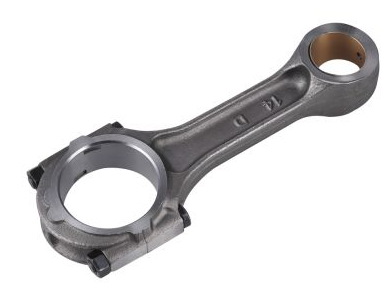The primary purpose of a connecting rod is to transfer reciprocating motion from the piston to the crankshaft in an internal combustion engine. This vital function enables the transformation of linear motion into rotational motion, which ultimately drives a vehicle’s wheels.
The Power Transmitter: Connecting Rod in Action
A connecting rod is a vital link within an internal combustion engine. It connects the piston to the crankshaft, acting as a bridge to transmit the force produced by the combustion process. As the piston moves up and down within the cylinder, the connecting rod transfers this reciprocating motion to the crankshaft, causing it to rotate. This rotational movement is what powers the vehicle’s wheels.
Different Types of Connecting Rods
There are various types of connecting rods, each with specific properties that suit different applications. For example, cast iron and forged steel rods are typically used in heavy-duty applications due to their strength and durability. On the other hand, aluminum rods, which are lighter, are often used in high-performance engines where weight reduction is critical.

The Role of Connecting Rods in Engine Performance
The design and construction of the connecting rod can significantly influence engine performance. For instance, a lighter rod can allow the engine to rev higher and faster, enhancing performance in high-speed applications. Conversely, a heavier rod can provide increased durability, making it more suitable for high-torque, low-speed applications.
Maintenance and Care of Connecting Rods
Given their vital role in engine operation, proper maintenance and care of connecting rods are essential. This includes regular inspection for signs of wear or damage, such as cracks or scoring, as well as ensuring proper alignment and torque during installation.
In conclusion, the connecting rod serves a crucial purpose in an internal combustion engine: transferring motion from the piston to the crankshaft. Its design and material can significantly influence engine performance, underscoring the importance of careful selection and maintenance. By understanding the role and function of the connecting rod, we can better appreciate its contribution to the complex symphony of engine operation.